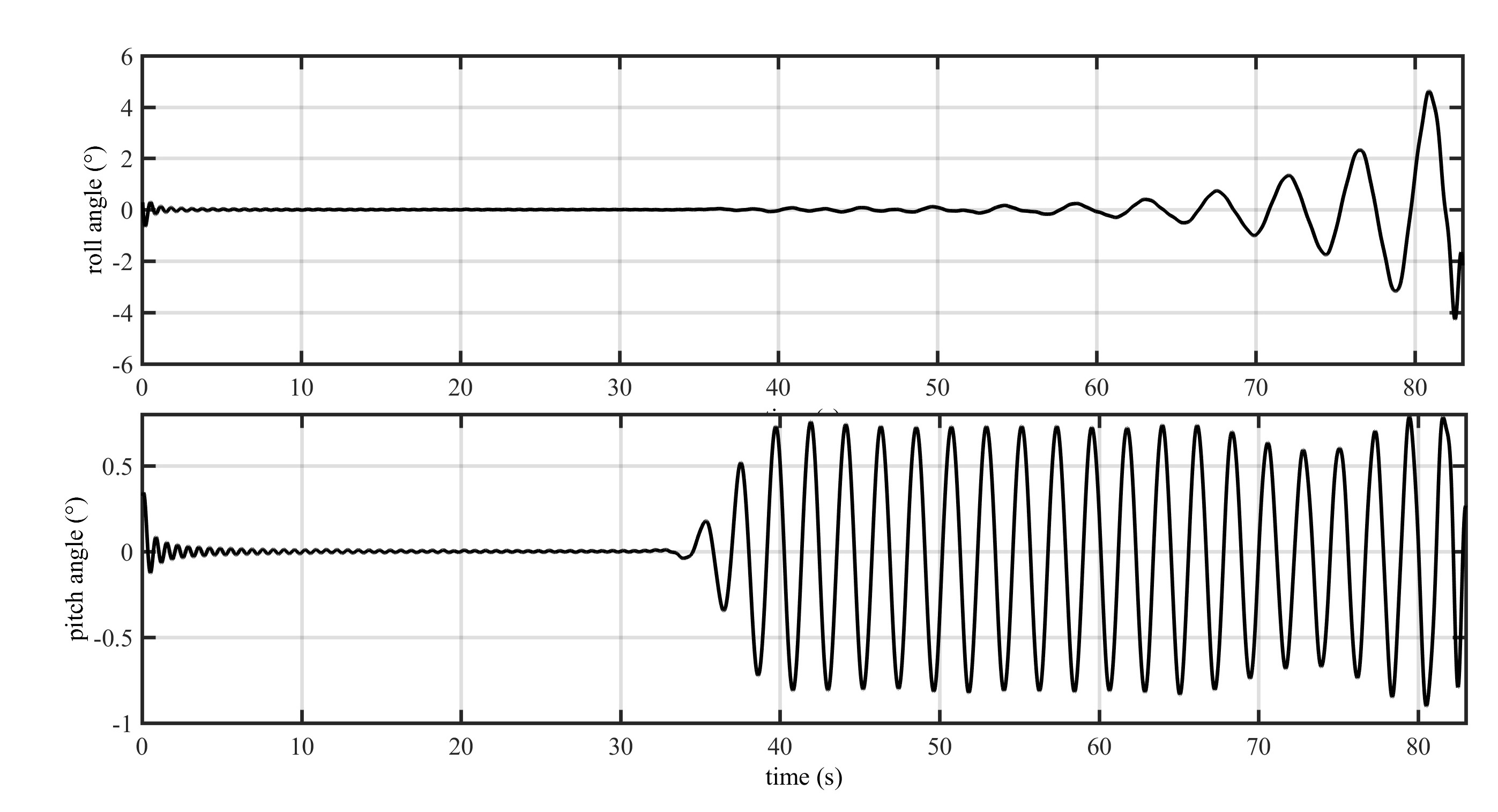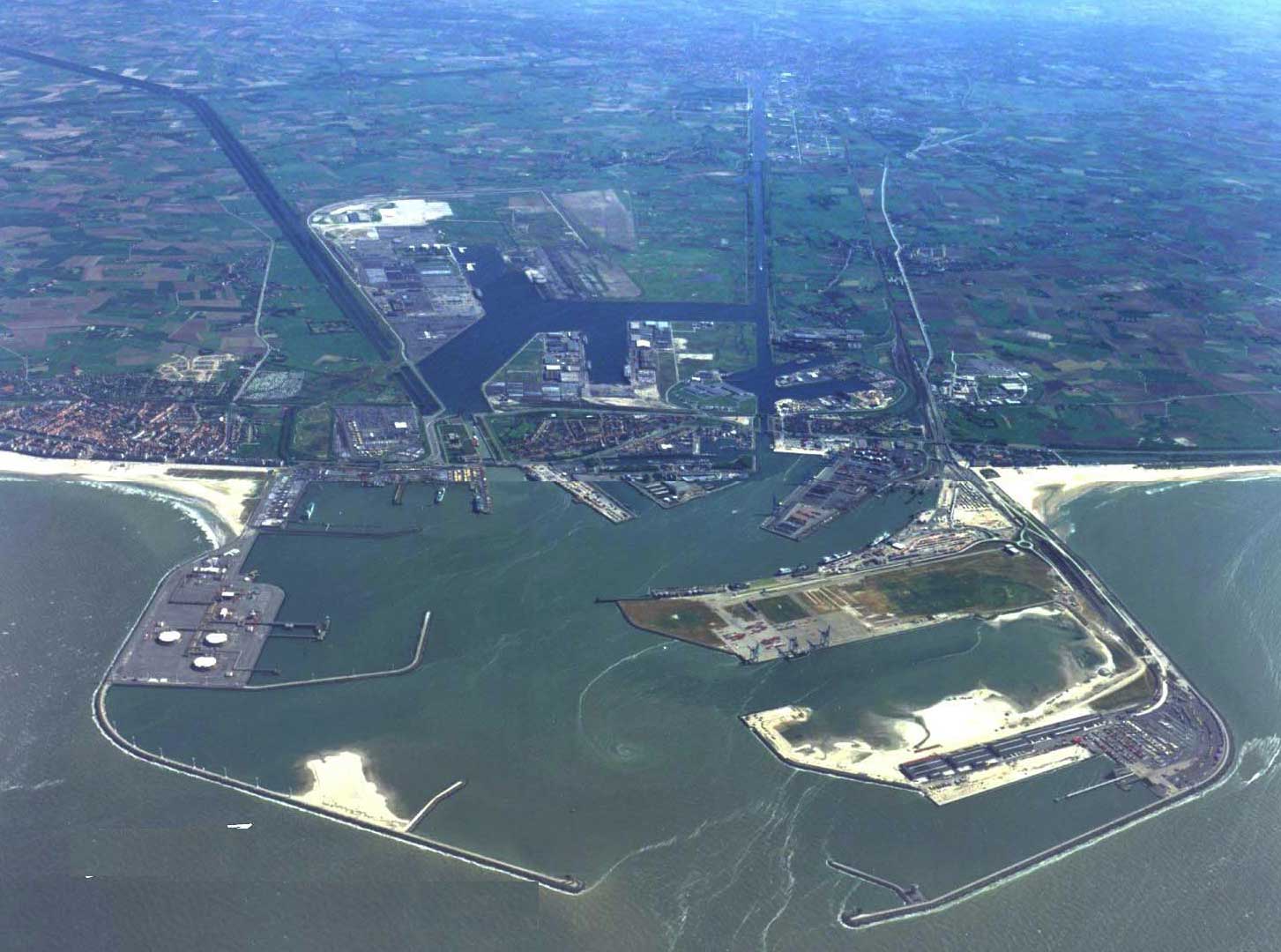Ship Manoeuvring in Shallow and Confined Water
Parametric rolling in shallow water
The phenomenon of parametric rolling is quite notorious. It is a potentially dangerous ship motion which results from a specific combination of forward speed, metacentric height, and waves with wave lengths of order a ship length in head and following waves.
Container ships are more sensitive to parametric rolling as their hull forms have a pronounced bow flare, a flat transom stern and a wall-sided mid-ship section, which all increase the risk of parametric rolling occurring. Although this phenomenon has been mostly observed in deep water, wave lengths triggering its occurrence are also present in coastal zones. However, in such regions they usually have smaller wave amplitudes. Hence, the risk of parametric rolling is mostly believed to be negligible.

A model of the KCS container ship has been tested for manoeuvres in shallow water waves in the Towing Tank for Manoeuvres in Shallow Water. One of the objectives was to investigate if parametric rolling can occur in shallow water with waves having very limited amplitudes, corresponding to port approaches and sailing in coastal zones. The experiments confirm that parametric rolling indeed occurs for certain combinations of wave conditions and forward speeds.
The video shows a test that was carried out at a water depth of 21.6 m and at a speed of 1.15 knots in head waves with an amplitude of 0.79 m and with a wavelength equal to the ship's length, i.e. 230 m (full scale conditions, scale factor 1:52.67). Please note that this video requires the quicktime plugin, which is not supported on certain browsers, such as Google Chrome.
The effects of shallow water on ship manoeuvring
Shallow water affects the manoeuvrability of ships considerably.
- The limited water depth will change the pressure distribution around the vessel and lead to an increase in hydrodynamic forces. The manoeuvrability decreases which, amongst other things, manifests itself in a substantial increase in the turning circle of the vessel or the required bend radius, e.g. on a river.
- The squat (a combination of a mean bodily sinkage plus a trimming effect) increases by a decreasing keel clearance which makes touching bottom more probable. An analogous remark can be made for entrance channels subject to the influence of waves, such as the Scheur. Through the waves the vessel will pitch, heave and roll. With larger vessels, this pitching and heaving response may be less, dependent on the wave spectrum, but the probability of touching bottom nevertheless increases on account of the decreased keel clearance and the greater effect of the rolling motion (due to waves, wind, bends) by vessels with a larger beam
- There is much shipping traffic to a busy port such as Antwerp. Vessels meet and overtake each other, by which the hydrodynamic pressure fields of both vessels influence each other and forces between both vessels interact. This ship-to-ship interaction can cause the vessels to drift toward each other, resulting in a collision. The increasing size of vessels elevates the probability of such interactions as well.
- Interactions don't only occur between the vessels themselves, but also between the vessel and the river or sea bank. If the vessel is sailing eccentrically in a channel, the hydrodynamic pressure field differs between starboard and port. As a result of this, a lateral force and a bow out moment act on the vessel, usually sucking it to the nearest bank. Smaller under keel clearances still reinforce this phenomenon.
- At different ports throughout the world (amongst others, Zeebrugge, and to a lesser extent, Antwerp) mud accumulates on the fairway bottom. This mud layer requires maintenance dredging to ensure the harbour access. The upper layer however usually consists of highly liquid mud, which is difficult to dredge. Increasing draught of vessels causes keels to make contact with the mud. The manoeuvrability of the vessel is significantly affected even with a small under keel clearance above the mud layer.


